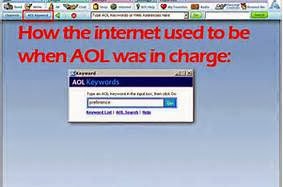First Microsoft with their late entry into the mobile market (and flubs leading up to it)… then Apple… now Facebook… anyone notice that they kinda suck lately?
Apple, clearly getting bored with it’s iPhone, is now turning its attention to it’s iWatch… which doesn’t make much sense to me; I purposely gave up all other devices, including a wristwatch, in favor of a single unified mobile device. It will take a lot to convince me to add a wristwatch back in, and I’m sure having to pay for it will be a deterring factor. (Next thing you know, they’ll add electroshock notifications, and make it so that authorities will have the ability to lock it to the wearer’s wrist and cause it to electromagnetically bind to the nearest metal object in order to detain people… (but that’s another whole story)).
I’m always toying with social media, so when I ran across a Facebook post from an entrepreneurial acquaintance recently, wondering if his content was being suppressed, I had to check it out. As an experiment, he posted a really cute puppy, and it picked up a fair number of responses. His concern was that his regular posts were not getting the response he’d grown accustomed to. To add yet more anecdote, there was recently a post on the New York Times’ blog about similar observations, tied to tweaks Facebook has made recently. It seems posts that are engaging or paid for are prioritized, and posts that are not quite as popular are at best “deprioritized”. It seems likely that even engaging posts tied to commercial products are likely suppressed unless paid for. Anyone who dabbles in trying to build an audience through Facebook must pay or make sure their content is very engaging. I like knowing about the books friends of mine are publishing. I like knowing about their small mom & pop shop. These posts are getting hidden from my newsfeed. It’s not the most engaging stuff, but it’s part of what I use Facebook for. Having this stuff drop off my radar makes Facebook start to suck more. Yes, they want to make money, but I think there may be even more to it.
I digress.
But I have to ask… with all the Big Data that companies like Apple, Intel, Microsoft, Qualcomm, Facebook, Google, and the rest have… and rest assured, they have it… the analytics. How can they really not recognize the things that are hurting their business?
Is it intentional?
If modern history has shown us anything, it’s that free markets do not tolerate monopolies. In every case, any time a company takes advantage of its own strength in the market, the market has pushed back, forcing one of a number of “bad” things upon the company. Just about every global company has seen this. I recall hearing about the Rockefeller oil breakup, but in our time, it was the Microsoft / Internet Explorer shakedown…. and there have been many others.
I long suspected the reason Linux existed and was not thoroughly stomped on by the powers that be (Microsoft) was to allow Linux to be a “competitor” in the market… something that would never have a unified corporate focus that could actually unseat Microsoft. I know that Microsoft even supported some Linux components, which anecdotally supports my theory. I’m sure they supported it as much as they felt they necessary in order to make sure Linux was a viable competitor.
When it became clear that Linux’s strength was flagging, a more corporate competitor became necessary. It seems Apple filled that gap very nicely in the PC market for some time.
While Apple began to dominate the mobile market, Google stepped up to become a competitor there, partially because Microsoft wasn’t committed to the market space. (It wasn’t enough of a threat to the PC market.) Android has the same problems as Linux… too decentralized to be a lasting threat, so while Apple had it’s heyday and now lets itself slip in the market, Microsoft will target Google. Eventually, I predict Apple and Microsoft will take turns with market dominance with Google there to provide another safety net.
So back to Facebook… It seems like Twitter has become a haven for market bots, but not much more of real use to the average person. Facebook’s power grew to near monopolistic levels over 2012, but I predict that Facebook will actually allow this unhappy situation to persist for entrepreneurial folks, encouraging them to explore Google+. This leadership transference to Google+ will bolster Google+ as a competitor, enabling Facebook to remain free of the shackles of being a monopoly. I suspect they’ll both start taking turns with market dominance, but despite the market competition, I bet both will claim better results in their marketing campaigns, thus leading to higher advertising prices on both.
The nasty part, here, is that the reason for preventing and sanctioning monopolies is to prevent them from strong arming their markets. Unfortunately, what it seems like we’re getting instead is very small oligarchies taking turns to be the dominant, but not quite monopolistic force in the market. They take advantage of each other to develop brand loyalty which improves their profit margins and gives them near monopolistic power among their followers, yet they maintain their monopoly-free, unsanctioned status.
